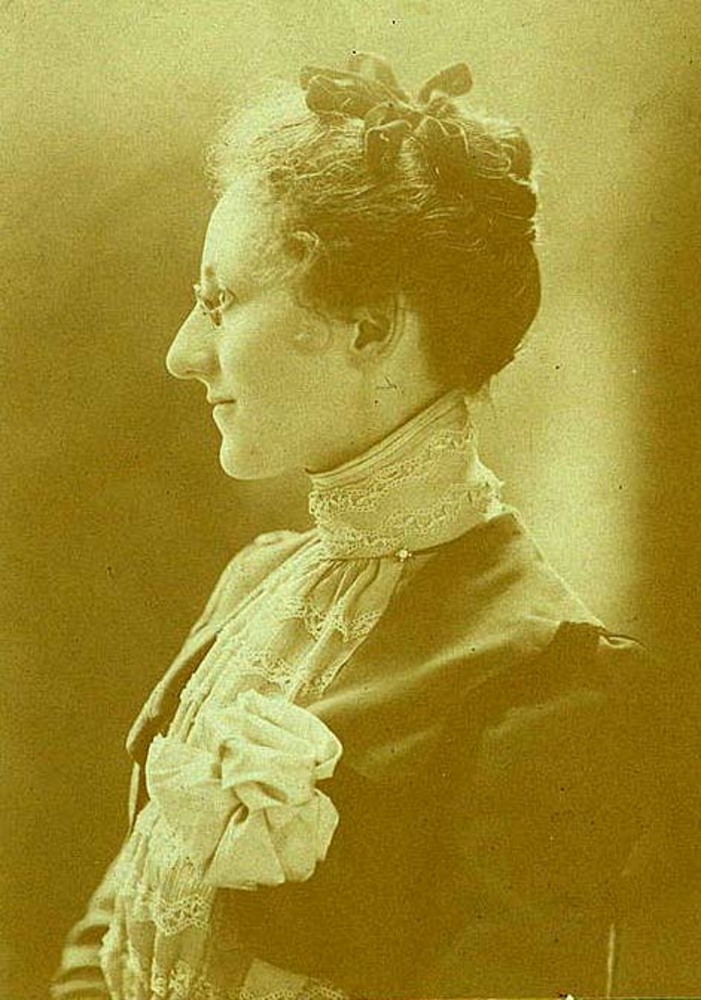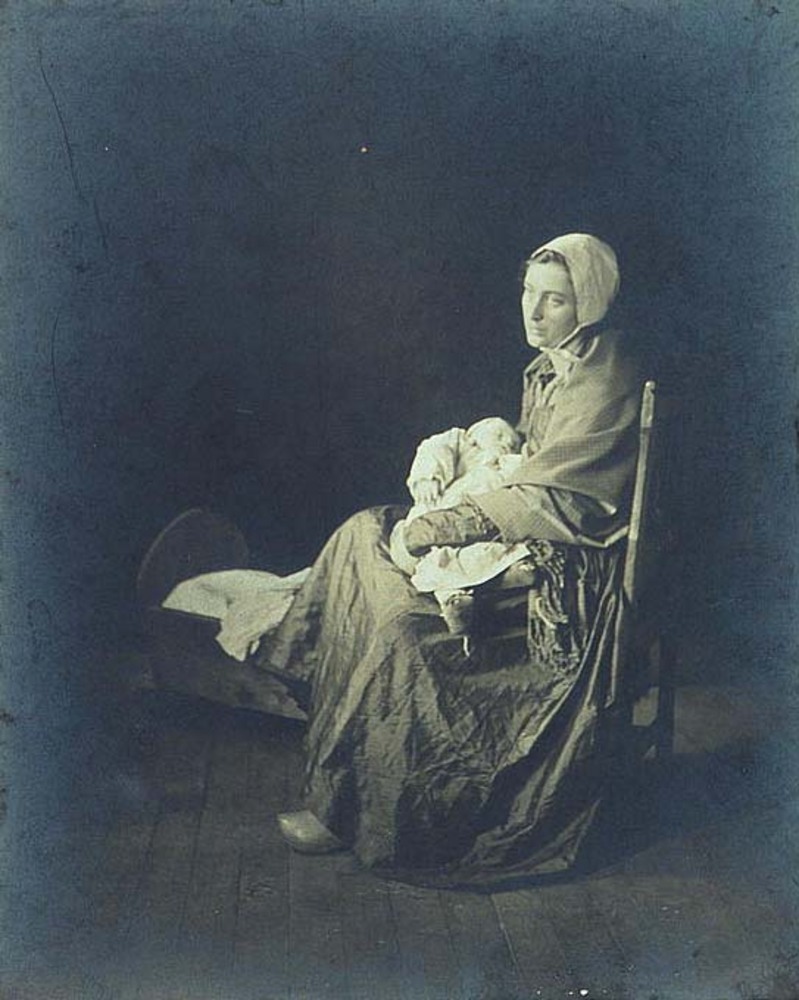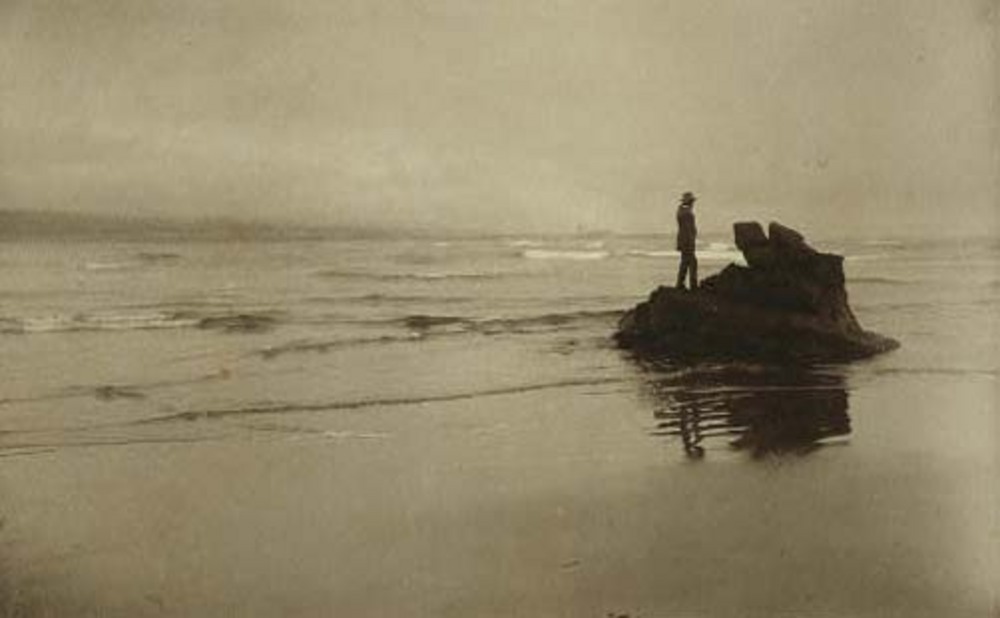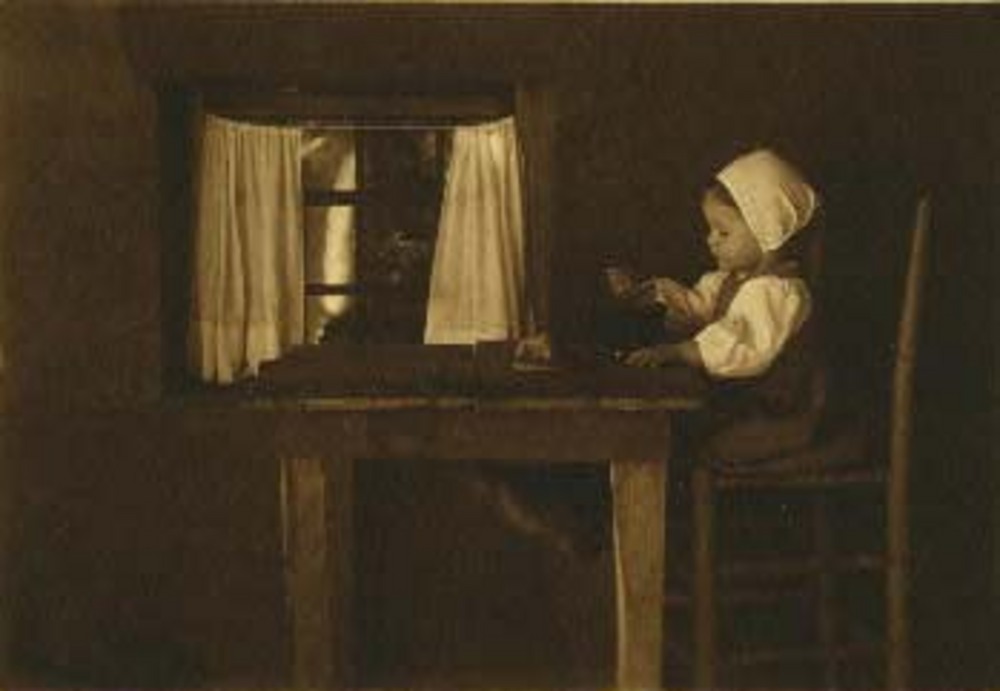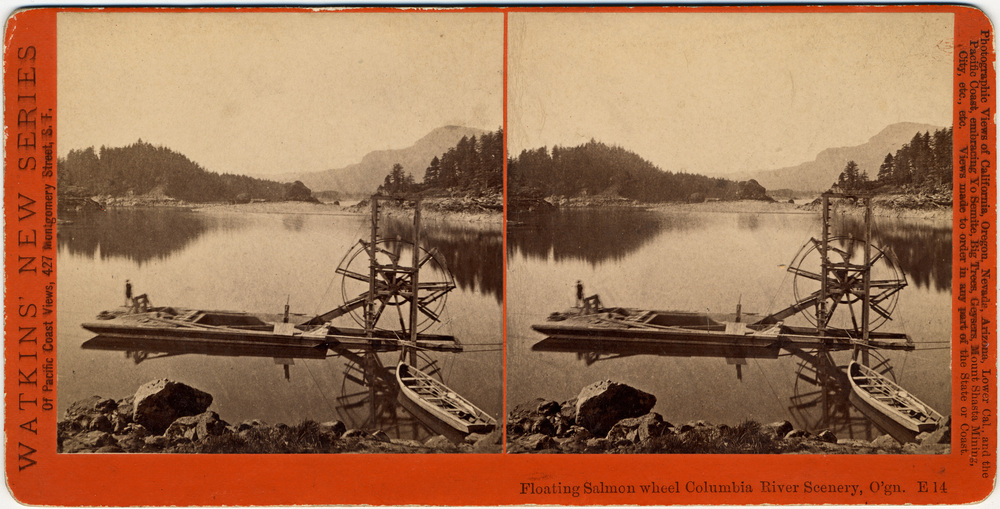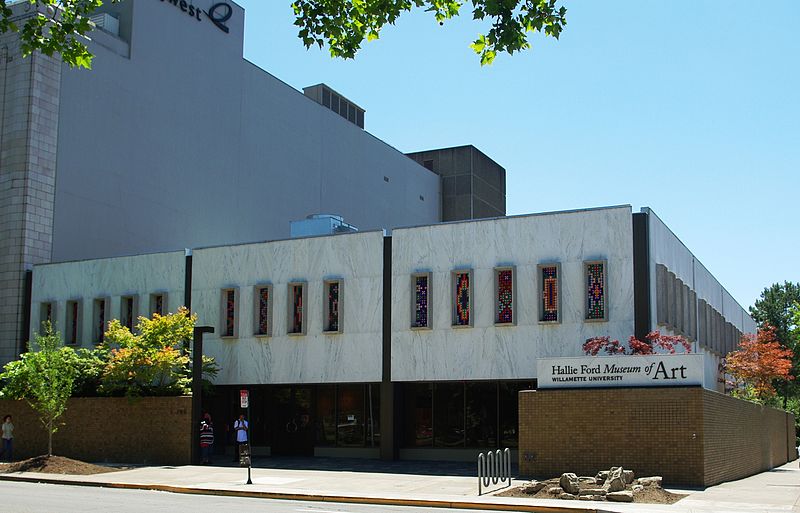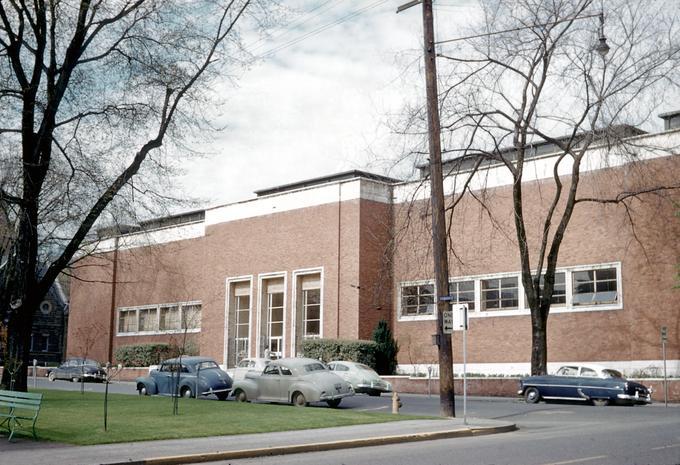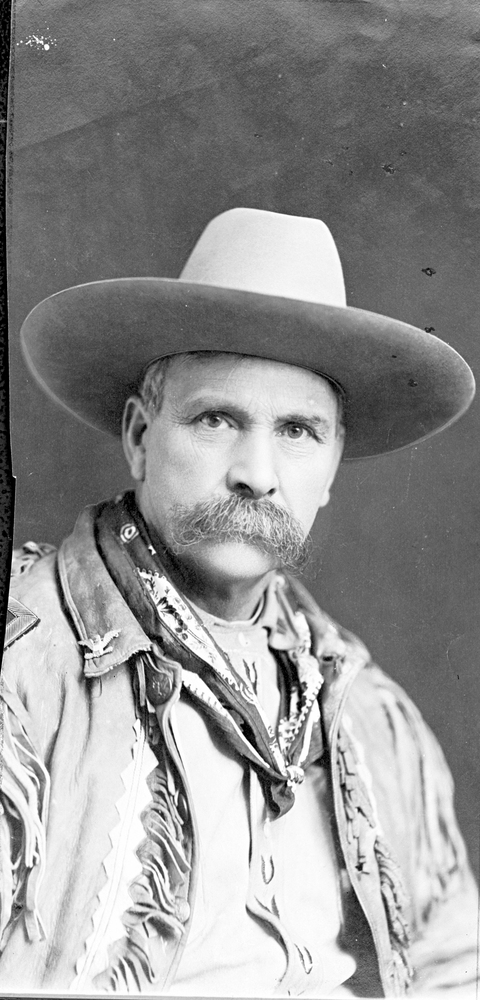Myra Albert Wiggins was a painter and photographer who gained recognition when she was named to Alfred Stieglitz's famed Photo-Secession, an elite group of American and European photographers dedicated to establishing photography as a fine art. Wiggins's carefully staged photographic vignettes, which resembled Dutch genre paintings, received favorable comment in the photographic press.
From the 1890s through 1910, Wiggins won numerous awards, cash prizes, and cameras for such photographs as Hunger is der Beste Koch (c. 1899), showing her young daughter dressed as a Dutch girl eating porridge, and The Edge of the Cliff (c. 1902), a study of a woman and little girl on a path above the Pacific Ocean at Newport, Oregon.
Myra Albert was born and raised in Salem, the daughter of John and Mary Holman Albert, both from pioneer Oregon families. Educated first at Willamette University and Mills College, from 1891 to 1894 she studied painting at the Art Students League in New York under William Merritt Chase, George DeForest Brush, and Kenyon Cox. From Chase, in particular, she learned to create richly textured still-life paintings.
While in New York, Wiggins joined the Society of Amateur Photographers and met Stieglitz, who inducted her into the Photo-Secession when he established the group in 1902. He also named two other Oregon photographers to the Secession, Lily White (1866-1944) and Sarah Ladd (1857-1927).
Wiggins began photographing in the 1880s. Her early work was of Oregon scenery, including remote locations in the Cascades that were published in the New York Herald and Photo-American magazine in 1894. After marrying Frederick Wiggins in 1894 in Salem and becoming a mother in 1896, she built sets suggesting a rustic cottage for posing her daughter Mildred and other models in domestic genre scenes. The best of these highly engaging works were shown in exhibitions in Philadelphia, Chicago, San Francisco, London, and Paris—generally in juried "salons" organized to showcase photography as a fine art.
In 1910, Wiggins was represented by three works in the most prestigious fine-art photography exhibition of all, the Albright Art Gallery in Buffalo, New York. Organized by Stieglitz, it was his culminating exhibition of what he deemed to be the world's best photography.
The family moved from Salem in 1907, settling in Toppenish, Washington, and later relocating to Seattle, where Wiggins maintained a studio until the end of her life. Her focus was increasingly on painting, but as late as 1954, less than two years before she died at the age of eighty-six, she exhibited paintings as well as art photographs at the De Young Museum in San Francisco.
A large collection of Myra Wiggins's photography is housed at the Portland Art Museum. Her photographs and paintings are also in the collection of the Hallie Ford Museum of Art at Willamette University. In 2003, her work was included in the exhibition Pioneer Women Photographers at the Frye Art Museum in Seattle, and her still-life paintings were the focus of an exhibition at the Hallie Ford Museum in 2004. In 2015, the Hallie Ford Museum presented photographs and archival materials, drawn from Willamette University collections, in the exhibition Myra Wiggins: A Photographer's Life.
-
![]()
Myra Albert Wiggins, c. 1900.
Courtesy Frances Benjamin Johnston Coll., Lib. of Congress Prints and Photo Div., LC-USZC4-9064 -
![]()
"The Mother," by Myra Albert Wiggins, 1901.
Courtesy Frances Benjamin Johnston Coll., Lib. of Congress Prints and Photo Div., LC-USZC2-6111 -
![]()
"Looking Seaward," by Myra Albert Wiggins, 1889.
Courtesy Frances Benjamin Johnston Coll., Lib. of Congress Prints and Photo Div., LC-USZC4-9079 -
![]()
"Hunger ist der beste Koch," photo by Myra Albert Wiggins, 1898.
Courtesy Frances Benjamin Johnston Coll., Lib. of Congress Prints and Photo Div., LC-USZC4-9064
Related Entries
-
![Carleton Emmons Watkins (1829-1916)]()
Carleton Emmons Watkins (1829-1916)
Carleton Emmons Watkins was a prominent San Francisco-based photographe…
-
Hallie Ford Museum of Art
The Hallie Ford Museum of Art at Willamette University has only been in…
-
![Lily Edith White (1866-1944)]()
Lily Edith White (1866-1944)
Photographer Lily White once professed: "Alone—controlling the power, d…
-
![Portland Art Museum]()
Portland Art Museum
The Portland Art Museum, which opened in 1895 in the city library with …
-
![Thomas Leander Moorhouse (1850-1926)]()
Thomas Leander Moorhouse (1850-1926)
Oregon photographer Thomas Leander Moorhouse of Pendleton, Oregon, was …
Map This on the Oregon History WayFinder
The Oregon History Wayfinder is an interactive map that identifies significant places, people, and events in Oregon history.
Further Reading
Glauber, Carole. Witch of Kodakery: The Photography of Myra Albert Wiggins, 1869-1956. Pullman: Washington State University Press, 1997.
Hull, Roger. "Myra Wiggins and Helen Gatch: Conflicts in American Pictorialism." History of Photography Summer (1992): 152-69.
Wiggins, Myra Albert. "Trials and Triumphs of an Amateur Photographer." The American Magazine of Art (September 1926): 482-83.



